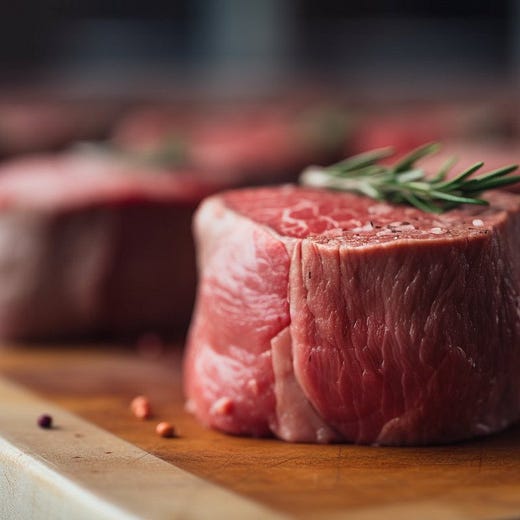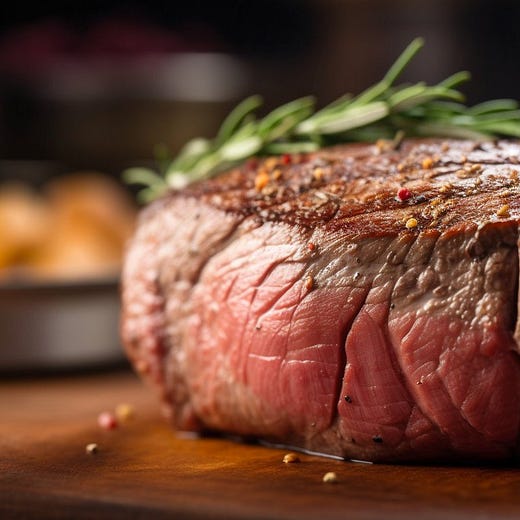Start creating AI-generated images with Midjourney
Practical use cases for Midjourney, and how to get started.
This is part 2 of a series on Midjourney and other diffusion models. Read part 1 here.
Last time, we looked at the basics of how Midjourney works and what it's capable of. Today, we’ll look at Midjourney in action.
How can businesses use diffusion models?
Below are 8 ways to use image-generating AI, but your imagination is truly the limit. Midjourney handles plenty of situations, but there are also tools being built for custom use cases.
Stock photos: This one is pretty obvious. Working directly with Midjourney, you can add any stock photo to landing pages, blog posts, and ads.



Logos: There are dozens of companies that generate high-quality logos using AI. With Midjourney specifically, you can use these as-is or as inspiration for a final version. Pro tip: customize your prompt to avoid putting text in the final design.
AI spokesperson: Last year there was a brief AI-avatar craze, powered by apps like Lensa AI. You can create your own brand spokesperson (or mascot) to be the face of your business. Apps like Synthesia are building avatars for custom sales or marketing videos.
Marketing assets: Midjourney can generate beautiful imagery for marketing campaigns. This will take some precise prompting to get the correct style and aspect ratio. Keep in mind that Midjourney isn't great at text, so you may need to do some asset post-processing. Canva lets users create designs within its asset editor, making the process seamless.
Here's clever marketing that sidesteps the text problem entirely!
Product photography: High-quality photos make a big difference for retailers. With the right prompt, Midjourney can create the perfect product backdrop, but it will likely need some additional Photoshop editing. Booth AI, among others, is working on this solution specifically.
Product development: Effortlessly produce new product ideas with no upfront investment. Recently, I prorotyped a coffee tumbler (photos, name, and description) using only AI tools.
Interior design: Using ControlNet, we can take an existing image of a room and reimagine it with a specific style. Companies like roomGPT and Interior AI are offering this as a packaged product.
Entertainment: We are entering an era of AI-generated entertainment. While creating high-resolution video is beyond most diffusion models today, I expect that to change in the coming weeks and months. Animation, VFX, and live-action video are all likely to be impacted by diffusion models. Combined with ChatGPT and voice-generating AI, entire movies and TV shows can be written, drawn, and voiced by AI.
How to get started with Midjourney
Note: all images created by Midjourney are publicly visible, unless you're a Pro plan subscriber.
Join the official Discord server (sign up for Discord if you don't already have an account).
Navigate to one of the "newbies" channels in the sidebar.
Type "/imagine" and start creating! If you want to get into the weeds, there are several different options to customize the output. But your prompt is always going to have the biggest impact.
Pro tip: if the chat is moving too fast, respond with the envelope emoji to any Midjourney Bot message. This will open a direct message (DM) channel with the bot. Once it's in your DMs, you can do all your /imagine-ing without losing track of your images.
The Midjourney bot will respond with 4 different images. We're all still figuring out the art of prompt engineering, so it may take a few tries to get an image you love. Here are some ideas if you’re stuck:
Search Midjourney's gallery for images similar to what you want and read their prompts.
Ask ChatGPT to generate a prompt for you.
Use a tool like img2prompt to generate a prompt from an existing image.
If you're really stuck, visit a paid marketplace like PromptBase to buy prompts. These marketplaces are very new, so buyer beware.
For each of the 4 images, you can make more variations (press “V1” through “V4”), or you can upscale the image to a higher resolution (press “U1” through “U4”). Upscaling will not create an identical version, though they will be very similar.
Right-click to download the image or click the “Open in browser” link. Upscaled images will also have a “Web” button to view the prompt, parent images, parameters, and output.
Final thoughts
Adding diffusion models into your workflow can feel like gaining superpowers when it comes to drawing and design. While there are still some rough edges, diffusion models are improving at an incredible rate.
It’s becoming child’s play to create professional-looking photos and videos. Midjourney V5, which is currently in beta, produces unbelievably realistic imagery. The professionals and businesses who leverage these tools will have a stark advantage over the ones who don’t.






















